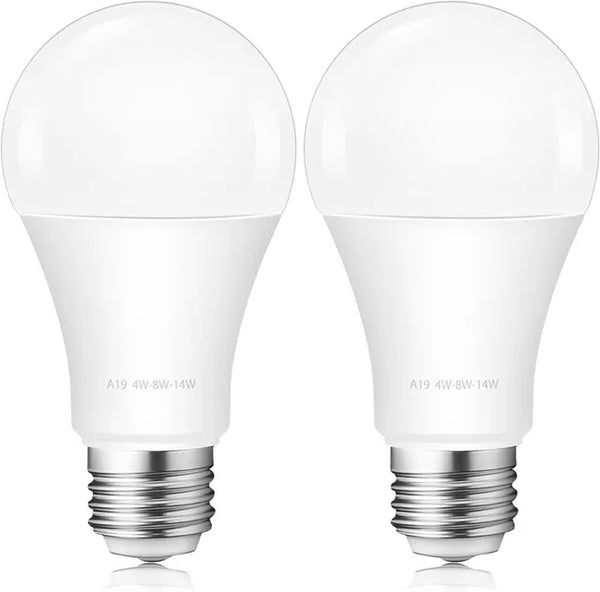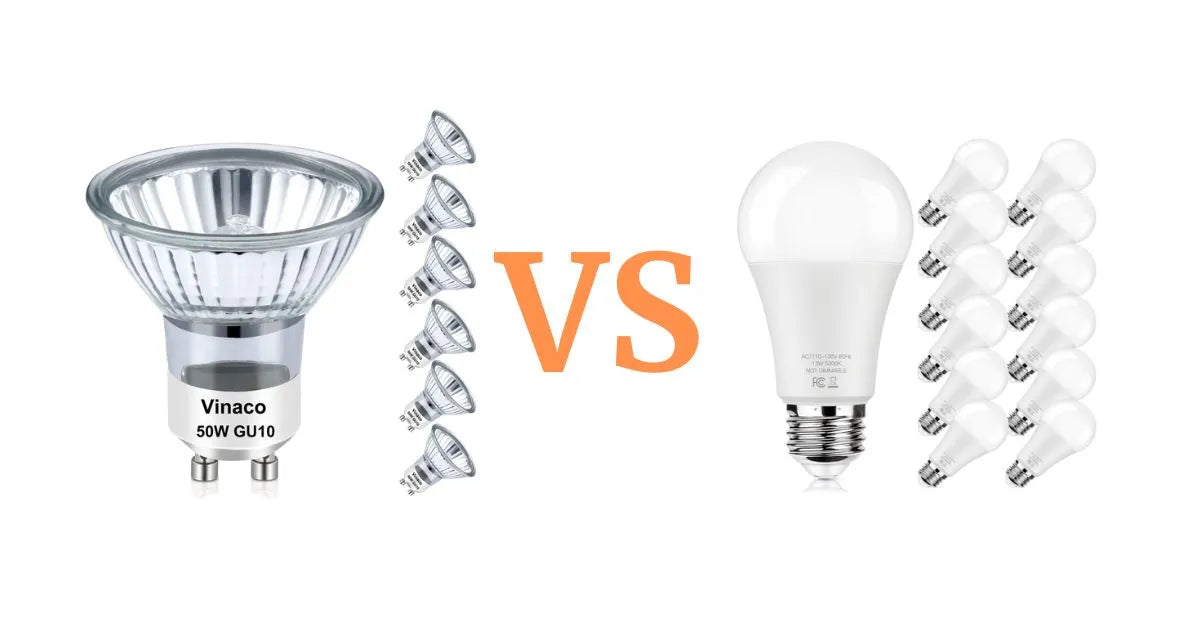Hey there! Let's dive into the world of lighting. We're going to explore the differences between fluorescent lamps and LEDs.
Choosing the right lighting can make a huge difference in your space. It affects mood, productivity, and even your energy bills.
So, let's shed some light on these two popular options.
What Are Fluorescent Lamps?

A fluorescent lamp is a type of light fixture that produces illumination through the excitation of mercury vapor. This excitation generates ultraviolet light, which then stimulates a phosphor coating on the inside of the lamp, causing it to emit visible light.
Types of Fluorescent Lamps
-
Standard Fluorescent Tubes: These are the classic long tubes. They come in various sizes and are great for lighting large areas.
-
Compact Fluorescent Lamps (CFLs): These are the twisted bulbs that fit into regular light sockets. They're like fluorescent tubes but in a more compact form.
Advantages of Fluorescent Lamps
Fluorescent lamps have some perks. They're more energy-efficient than old-school incandescent bulbs. They also last longer, which can save you money in the long run.
These lamps are ideal for general room lighting. They provide a broad, even light that can illuminate a whole space effectively.
Disadvantages of Fluorescent Lamps
But it's not all sunshine and rainbows. Fluorescent lamps contain mercury, which is bad for the environment. They can also flicker, which some people find annoying.
The quality of light from fluorescent lamps isn't always the best. Some people complain that it feels "cold" or unnatural. Plus, they don't last as long as LEDs.
What Are LED Lamps?

Now, let's talk about LEDs. These are the new kids on the block, and they're making waves in the lighting world.
Types of LED Lamps
-
Standard LED Bulbs: These look like regular light bulbs but use LED technology. They come in various shapes and sizes.
-
LED Tubes: These are designed to replace fluorescent tubes. They're more energy-efficient and often provide better light quality.
Advantages of LED Lamps
LED lamps are super long-lasting. Some can shine for up to 100,000 hours! That's over 11 years of continuous use.
They're also incredibly energy-efficient. This means lower electricity bills for you. Plus, they don't contain harmful materials like mercury.
Another cool thing about LEDs? They barely emit any heat. This can help keep your space cooler, especially in summer.
Related: Are LED Floor Lamps Worth It? Find Out Here!
Disadvantages of LED Lamps
The main downside of LEDs is their higher upfront cost. They're more expensive to buy than fluorescent lamps.
Some people also notice differences in color temperature between LED bulbs. This can make it tricky to get consistent lighting throughout a space.
Energy Efficiency Comparison
Let's talk numbers. How do fluorescent lamps and LEDs stack up when it comes to energy use?
How Energy Consumption Differs
| Lamp Type | Energy Consumption |
|---|---|
| Fluorescent | Moderate |
| LED | Low |
LEDs are the clear winner here. They use significantly less energy than fluorescent lamps. Over time, this can lead to substantial savings on your energy bills.
Lumens Per Watt Efficiency
Lumens per watt is a measure of how efficiently a light source converts electricity into visible light. Here's a quick comparison:

As you can see, LEDs generally produce more light per watt of electricity used. This makes them more efficient overall.
Lifespan and Maintenance
How long do these lights last? And how much work do they need to keep shining bright?
Lifespan of Fluorescent vs LED Lamps
Fluorescent lamps typically last between 10,000 to 15,000 hours. That's pretty good, but LEDs blow them out of the water.
LED lamps can last up to 100,000 hours. That's more than six times longer than fluorescent lamps!
Maintenance Requirements
Fluorescent lamps need more TLC. You'll need to replace the ballast occasionally. And of course, you'll need to change the bulbs more often.
LEDs, on the other hand, are low maintenance. Once you install them, you can pretty much forget about them for years.
Light Quality and Performance
Light quality can make a big difference in how a space feels. Let's see how fluorescent lamps and LEDs compare.
Color Rendering and Light Quality
Color Rendering Index (CRI) measures how accurately a light source displays colors. Here's how they stack up:
| Lamp Type | Typical CRI Range |
|---|---|
| Fluorescent | 60-90 |
| LED | 70-95+ |
LEDs generally have a higher CRI. This means they show colors more accurately, which can make a space feel more natural and inviting.
Directionality of Light
Fluorescent lamps emit light in all directions. This can be good for general lighting but can also lead to wasted light.
LEDs are directional. They focus light where you need it. This can be more efficient and allows for more precise lighting design.
Environmental Impact
We all want to be kind to the planet. So how do these lighting options measure up environmentally?
Environmental Concerns with Fluorescent Lamps
Fluorescent lamps contain mercury. It's only a small amount, but it's still a concern. When these lamps break or are disposed of improperly, they can release mercury into the environment.
Recycling fluorescent tubes can also be a challenge. Many people don't know how to dispose of them properly.
Related: Eco-Friendly Guide: How to Dispose of Floor Lamp
Environmental Benefits of LED Technology
LEDs are the greener choice. They don't contain hazardous materials like mercury. Their long lifespan also means less waste over time.
Plus, their energy efficiency translates to a lower carbon footprint. By using less electricity, they help reduce greenhouse gas emissions.
Our Final Verdict: Which Lighting Option is Best for You?
Deciding between fluorescent lamps and LED lights has never been clearer with our detailed comparison.
Opt for a Fluorescent Lamp when:
- You seek a cost-effective lighting solution.
- You prefer a traditional lighting option.
- You have existing fluorescent fixtures that need replacement.
- You require bright, uniform lighting in large spaces.
For those considering fluorescent lamps, Home Depot Fluorescent Tube Lights are a reliable choice.
On the other hand, choose LED Lamps if:
- You prioritize energy efficiency and long-term savings.
- You desire versatile lighting options with adjustable features.
- You appreciate instant brightness without warm-up time.
- You seek superior light quality and color accuracy.
- You want to reduce environmental impact with eco-friendly lighting solutions.
For those leaning toward LED lamps, IKEA LED Lamps offer a wide selection of high-quality options to illuminate your space efficiently and stylishly.
Ultimately, the best choice is the one that fits your specific needs and values.
Consider factors like initial cost, long-term savings, light quality, and environmental impact when making your decision.
FAQs
Are LED or fluorescent lights better?
LED lights are generally considered better than fluorescent lights for several reasons. LED lights are more energy-efficient, have a longer lifespan, are more durable, and do not contain toxic materials like mercury found in fluorescent lights. Additionally, LED lights provide better quality lighting and are more environmentally friendly.
Should I replace my fluorescent tube with LED?
Replacing your fluorescent tube with an LED tube can be a beneficial upgrade. LED tubes generally last longer, use less energy, provide a smoother and more pleasant light output, and are more cost-effective in the long run. When replacing fluorescent tubes with LED, it's important to remove the ballast and ensure compatibility with your existing fixtures.
Can I put LED bulbs in a fluorescent fixture?
Yes, you can put LED bulbs in a fluorescent fixture. Many LED tubes are designed to be compatible with existing fluorescent fixtures, making the transition to LED lighting relatively straightforward.
Is fluorescent light better than LED for eyes?
LED lights are generally considered a better alternative for eye health compared to fluorescent lights. LED lights emit less blue light, which can be beneficial for eye health. However, it's essential to consider factors like flickering, brightness, and color temperature when choosing lighting to minimize eye strain and fatigue.










Leave a comment
All comments are moderated before being published.
This site is protected by hCaptcha and the hCaptcha Privacy Policy and Terms of Service apply.